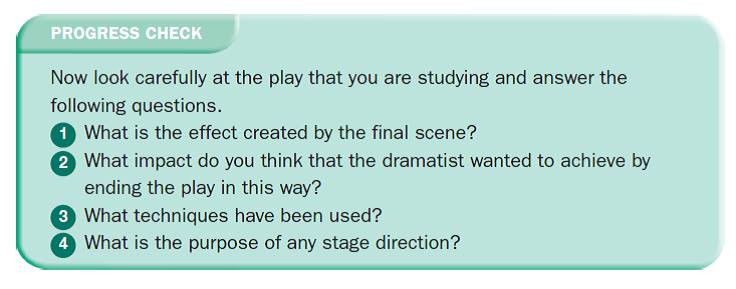Endings
After studying this section, you should be able to:
• understand the ways that plays can end
• identify techniques that dramatists can use to end their plays
• apply these ideas to the play you are studying
Just as the opening of the play is an important element in a drama, the way in which a play ends can be important too, as shown in the following two extracts.
Example – Doctor Faustus
Read the following extract, which is the ending of Doctor Faustus by Christopher Marlowe.
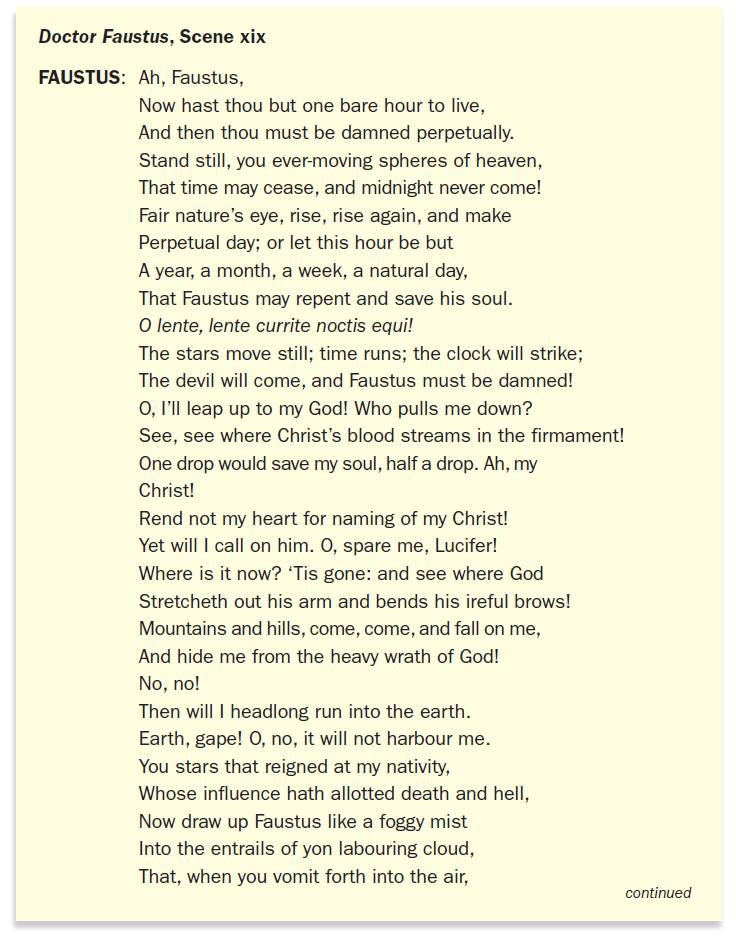
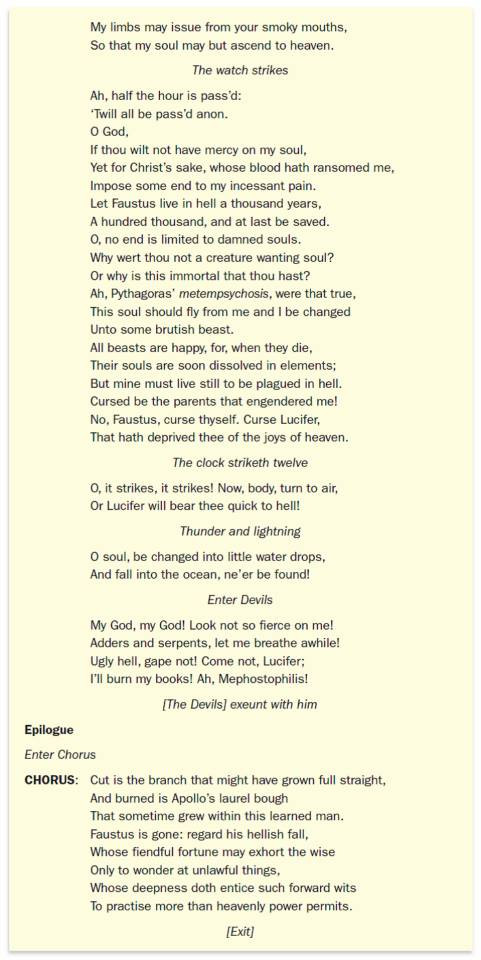
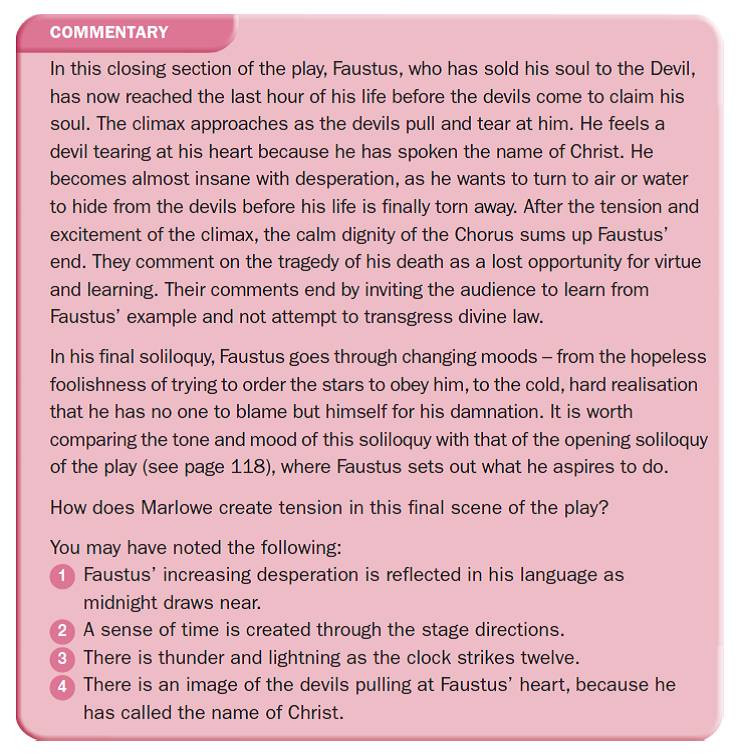
Example – The Rivals
Now look at the second example of an ending, which is taken from The Rivals by Richard Sheridan.
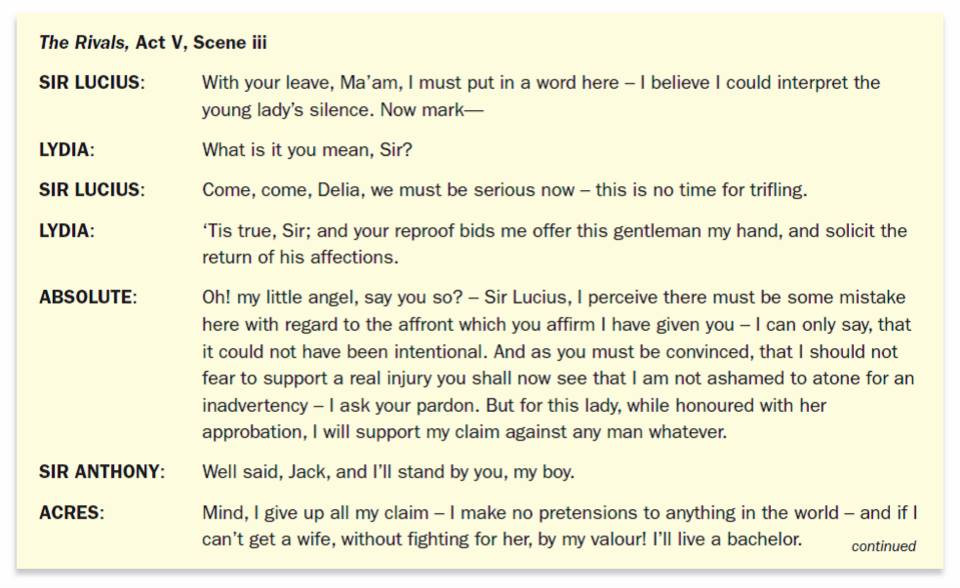
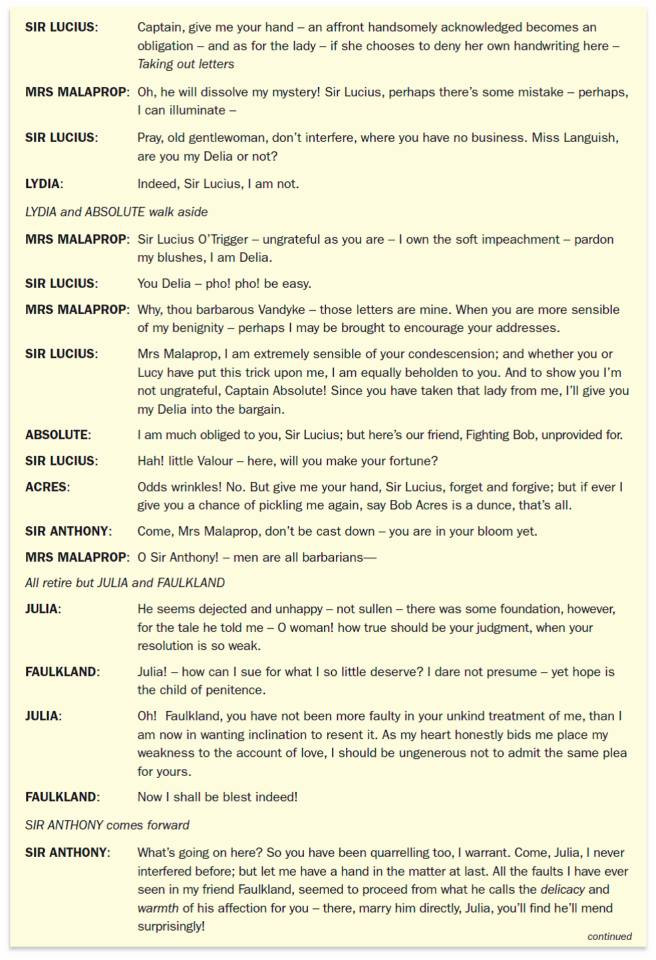
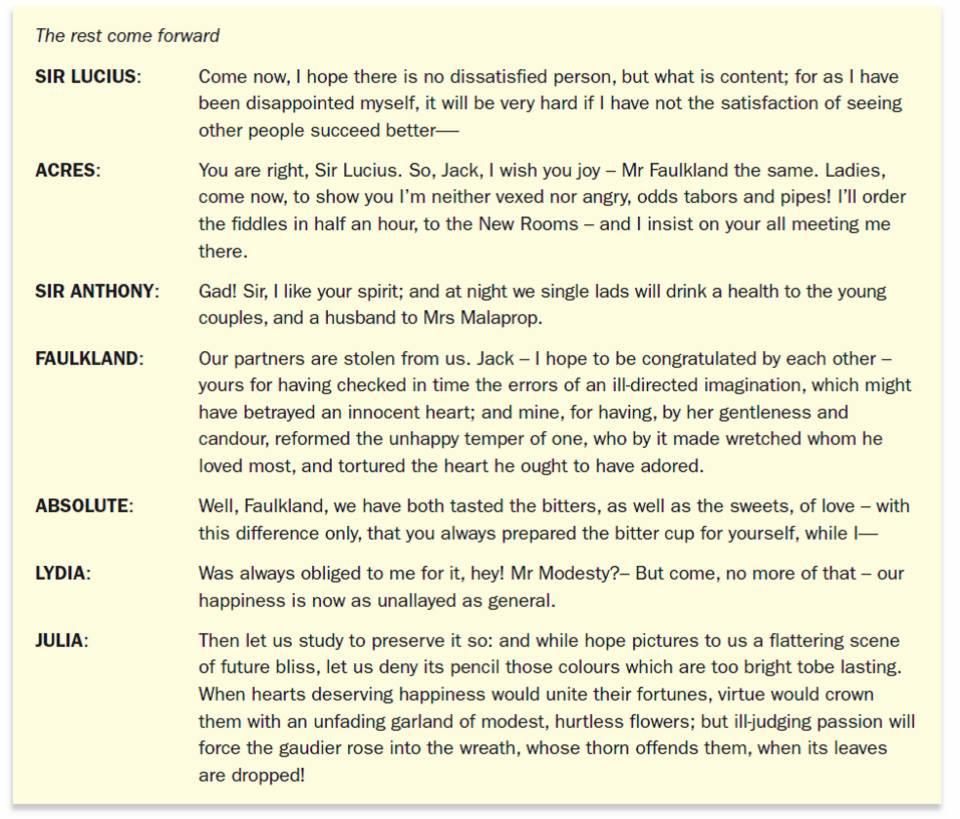
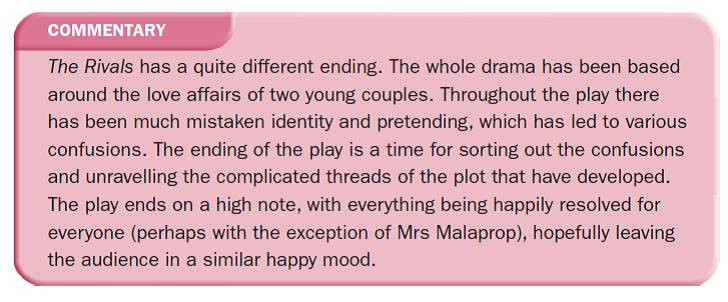
The Techniques Used to End Plays
You may find it useful to think about the dramatic techniques that Marlowe and Sheridan use to draw their dramas to an end:
• Doctor Faustus ends with a dramatic climax, which comes at the end of a passage of mounting tension as the hour approaches when Lucifer will claim Faustus’s soul. In the final lines he is dragged away by devils, which creates a shock effect on the audience. The lines of the Chorus that conclude the drama bring the tension down, but also serve to remind the audience what they have seen in the fall of Faustus, and that they should learn from it.
• In The Rivals, Sheridan also brings his drama to a climax with the revelation of the true identities of several characters. This climax, though, is followed by the resolution of all the confusions, disputes and arguments that have been developed throughout the play – so the play ends on a happy note, with everything reconciled.
When studying a play, ask yourself how the dramatist draws the play to a conclusion, and how effective you find the final scene as an ending to the play.

